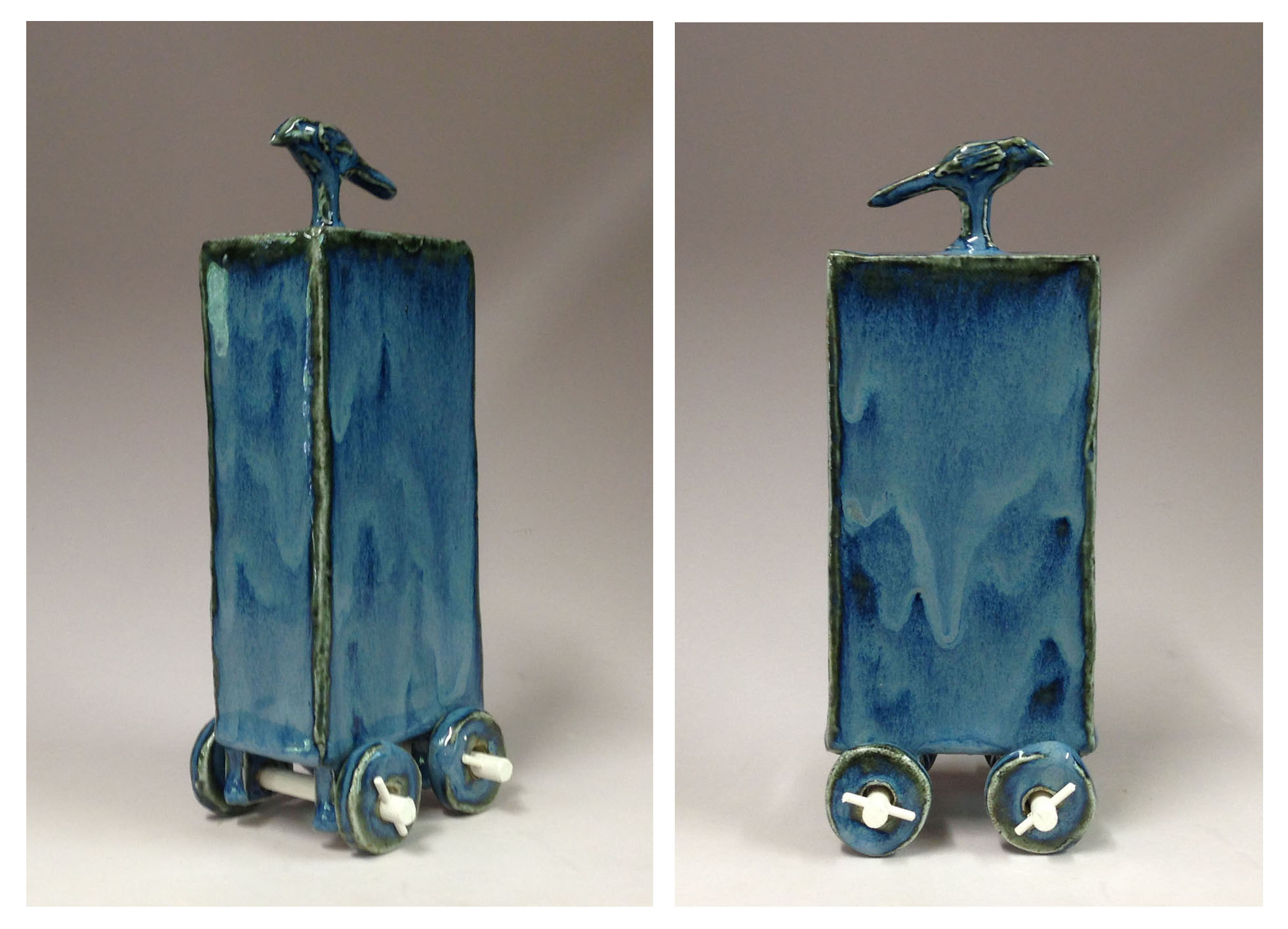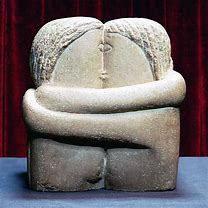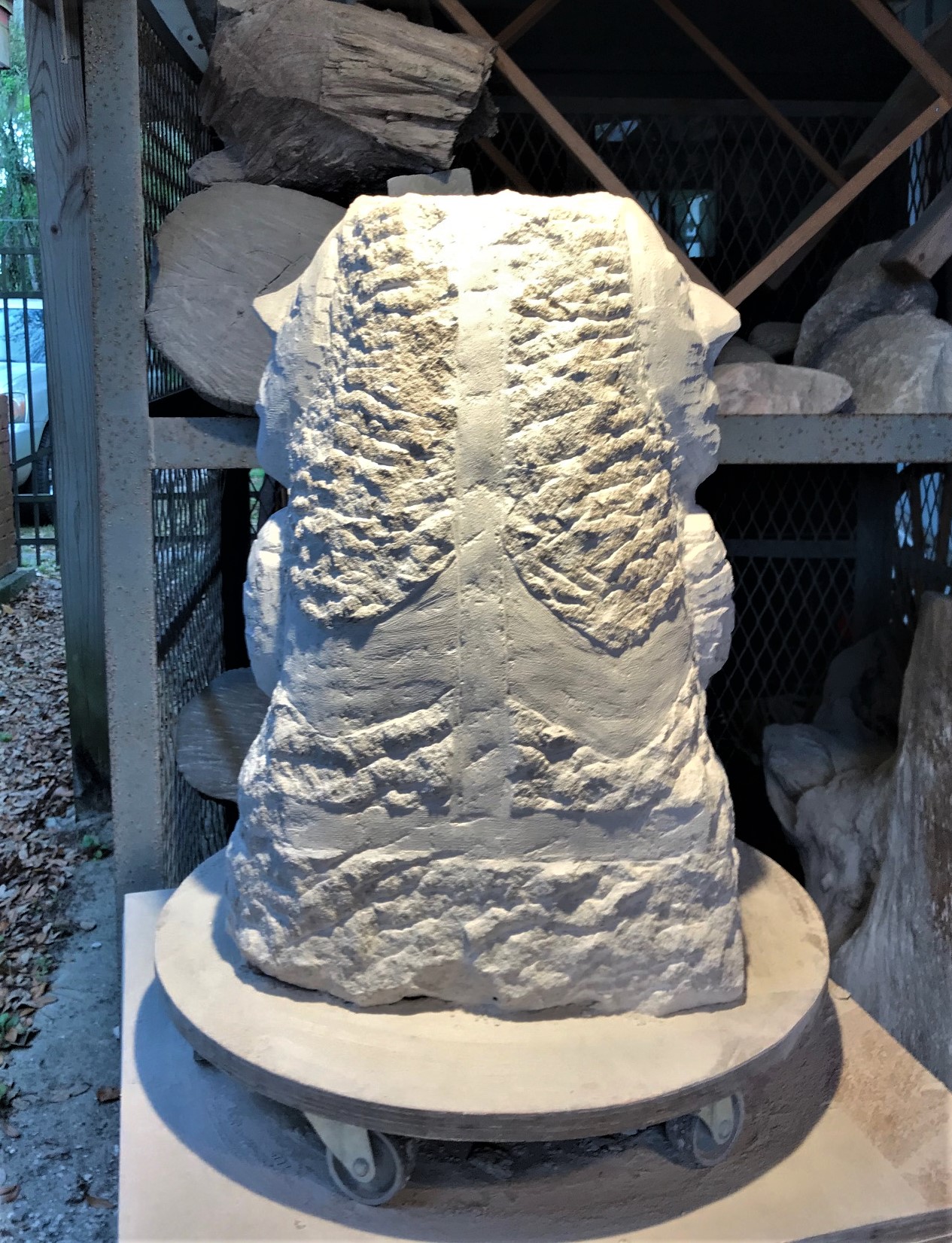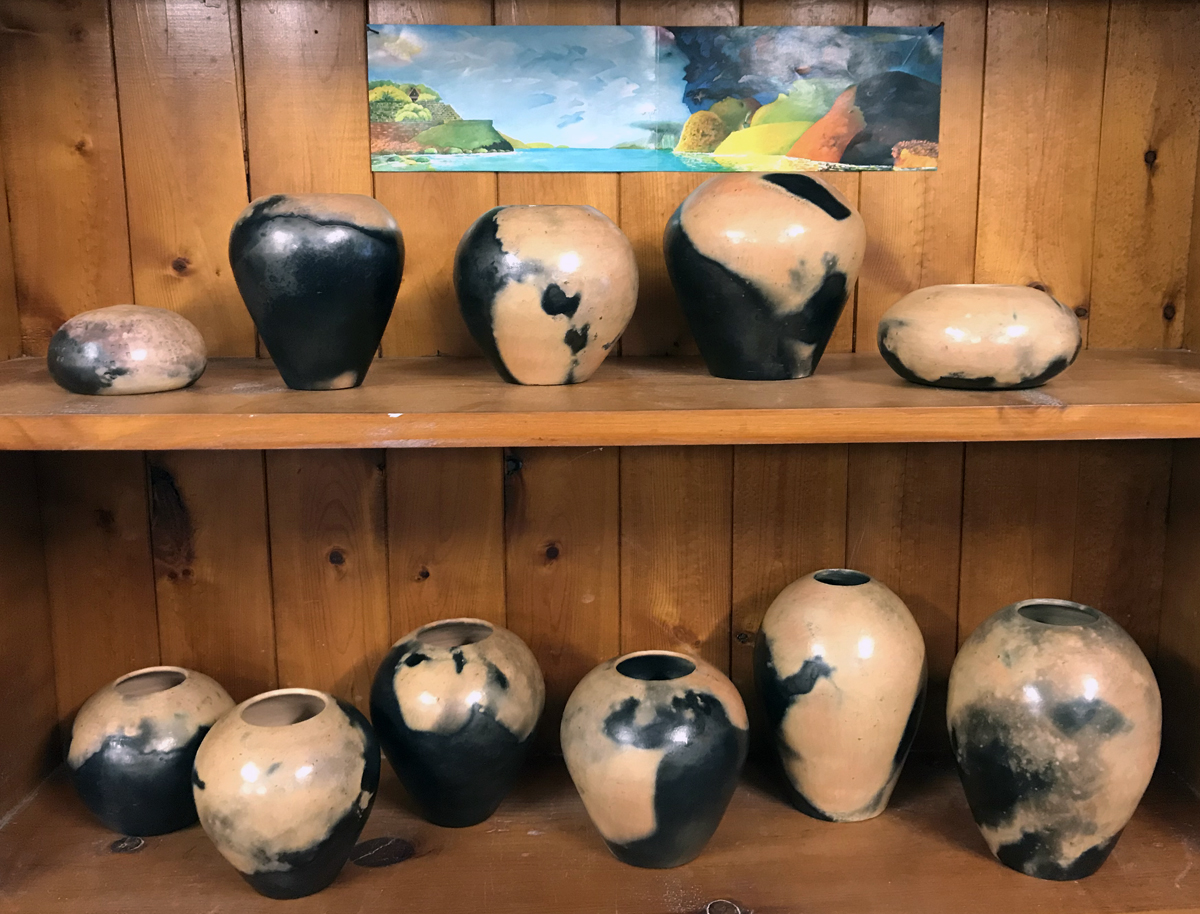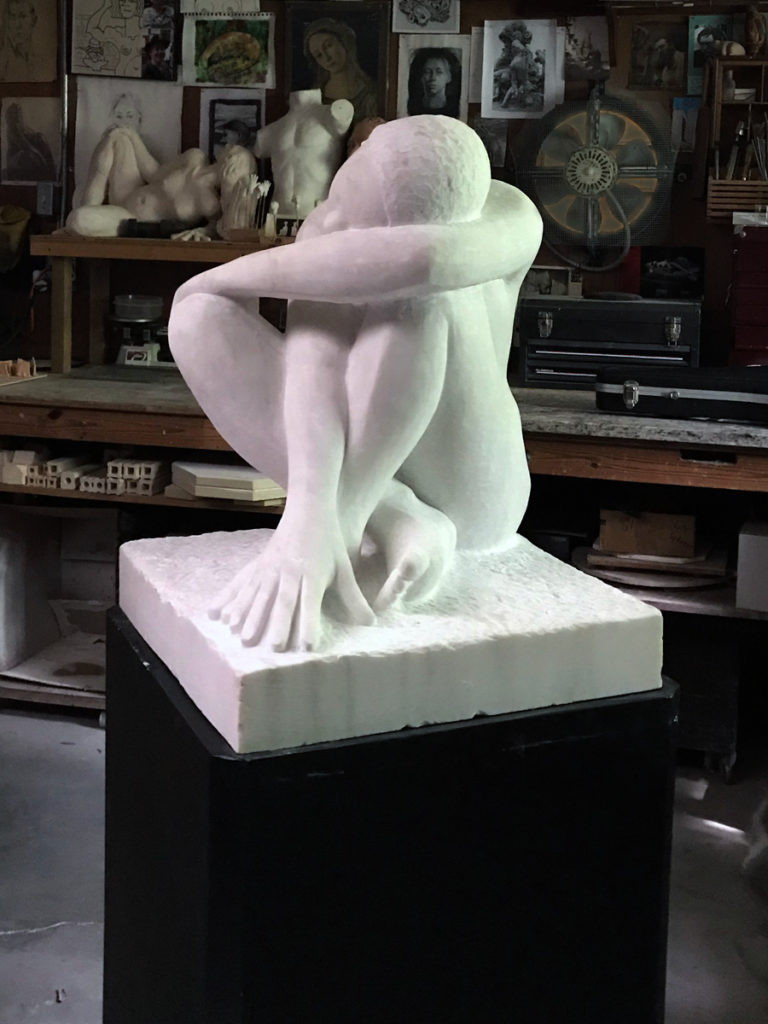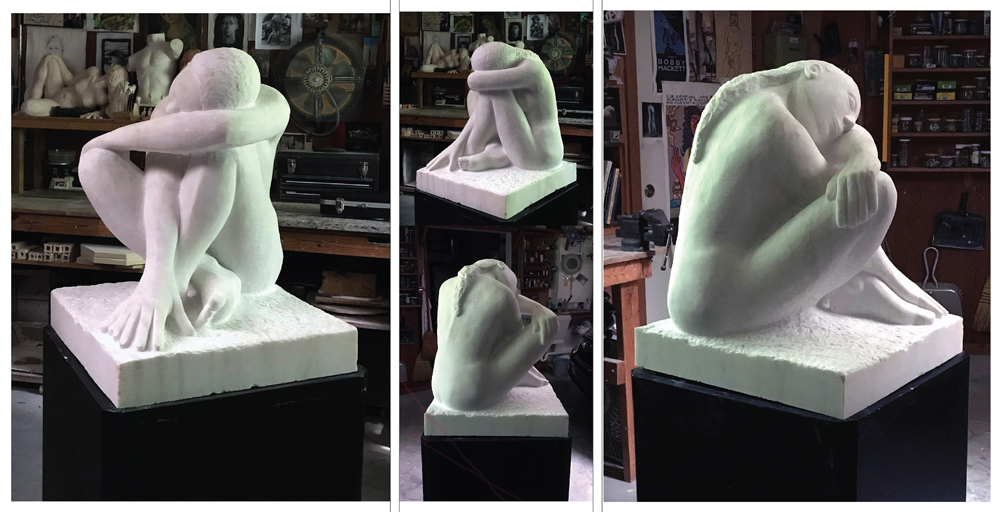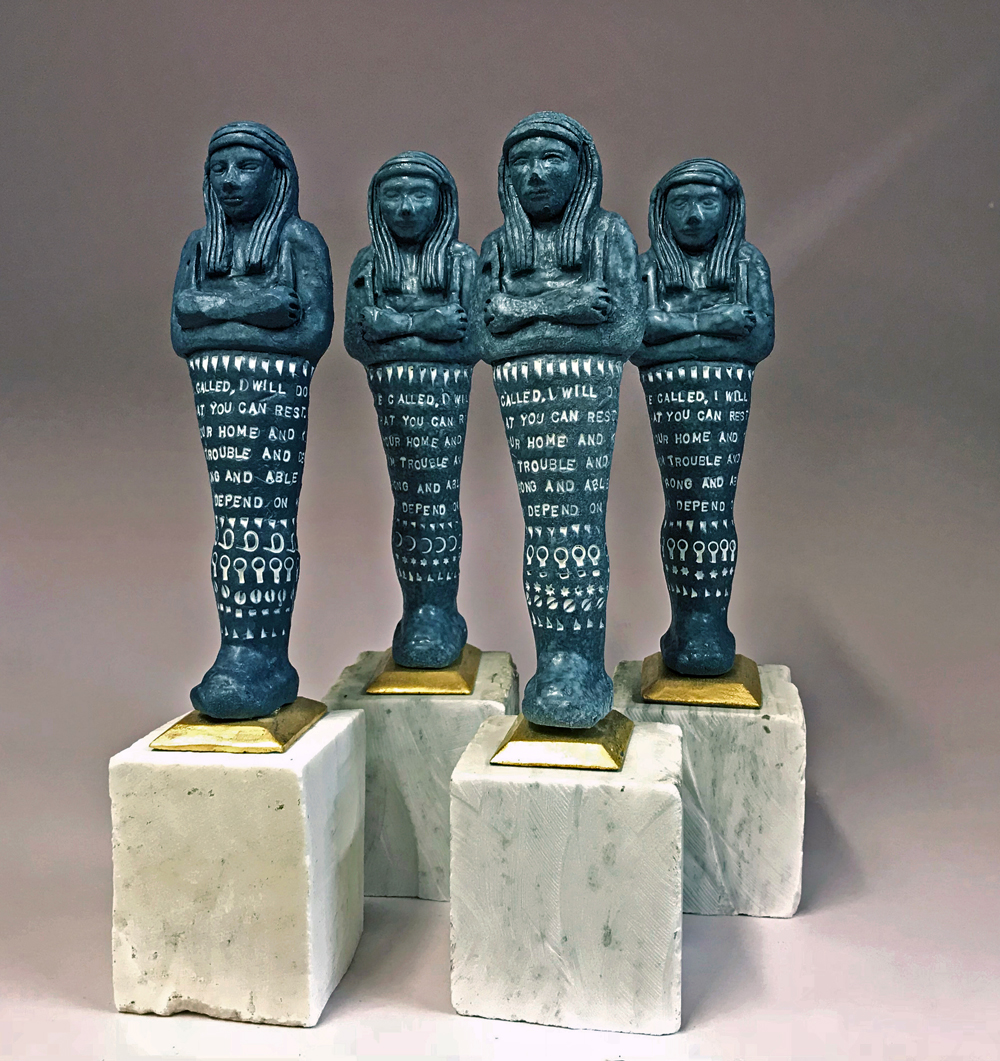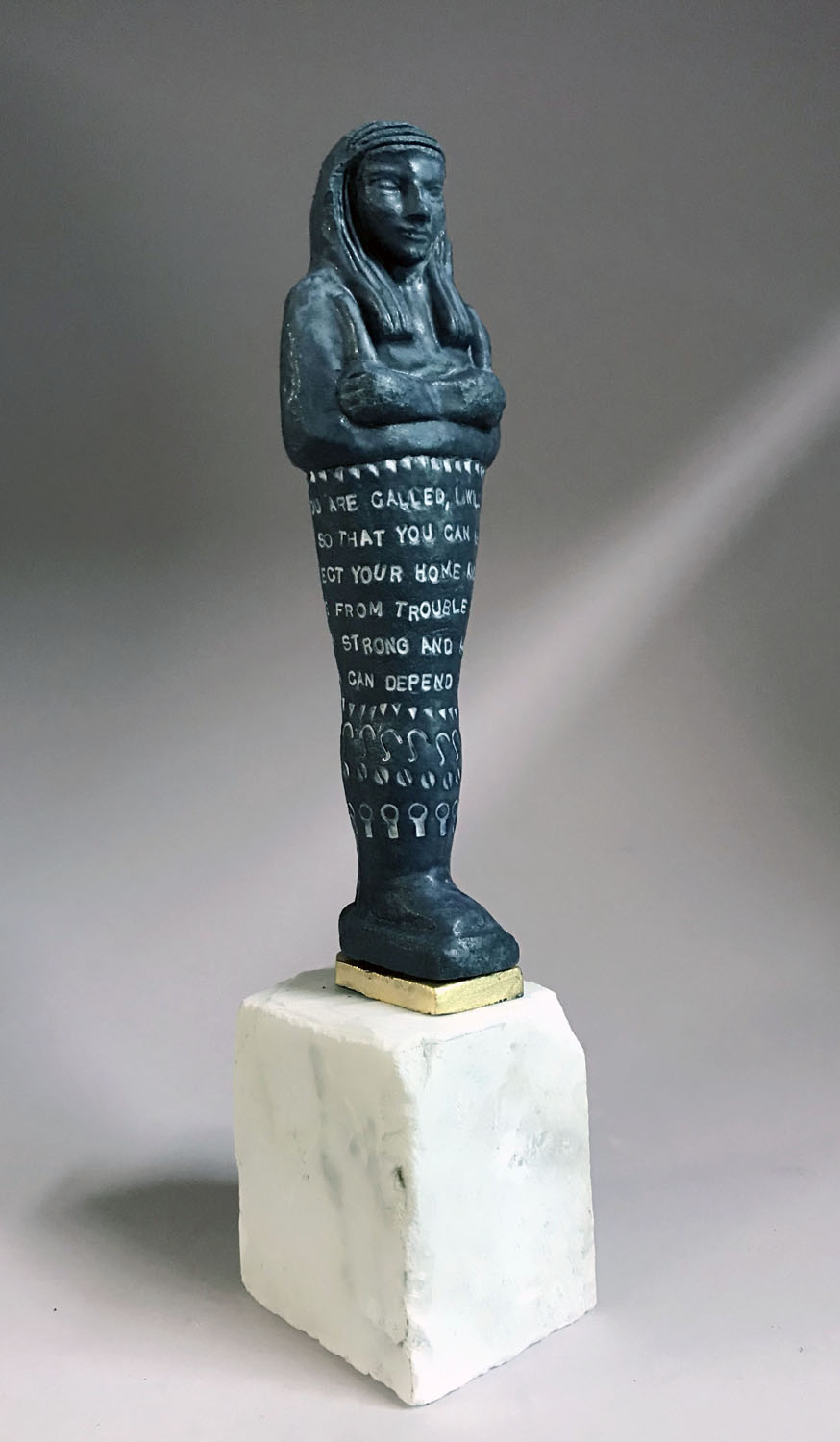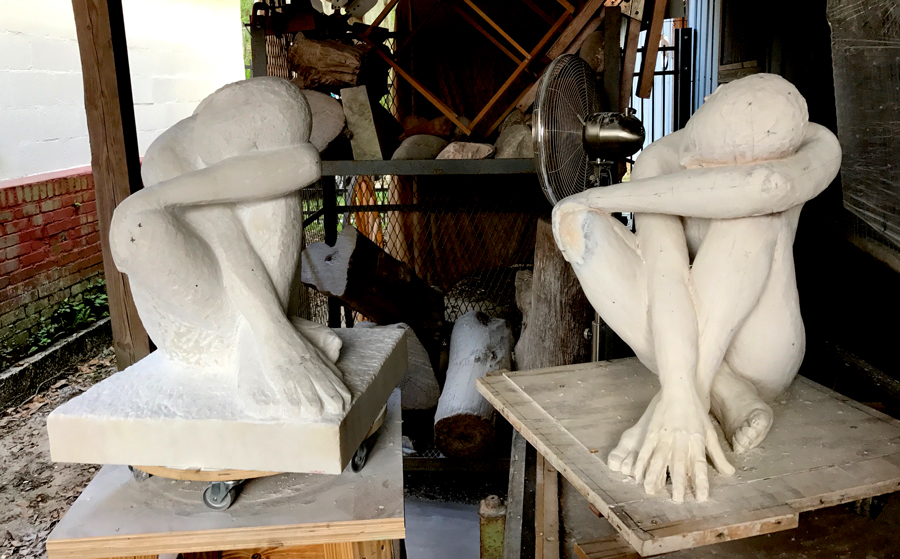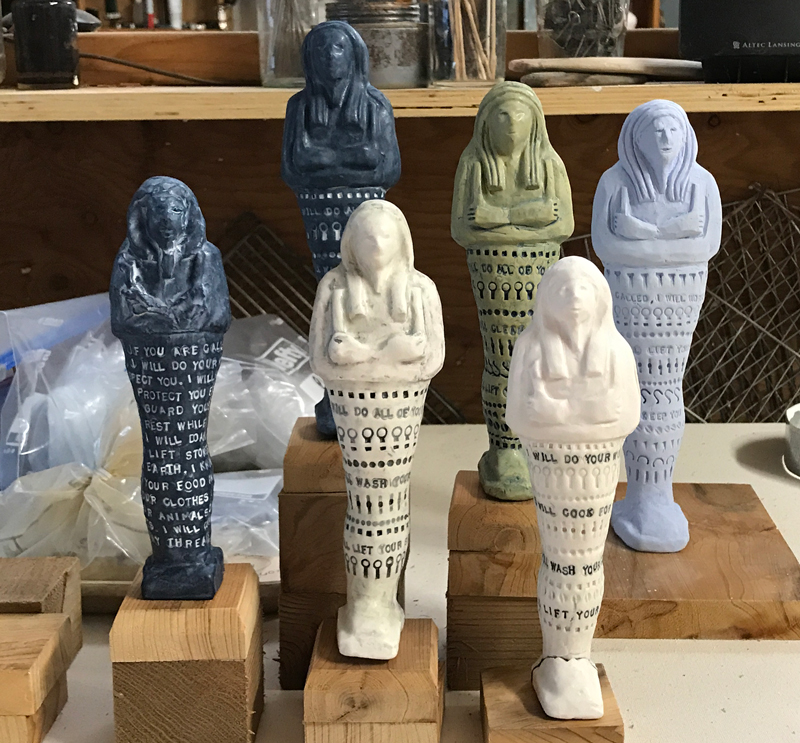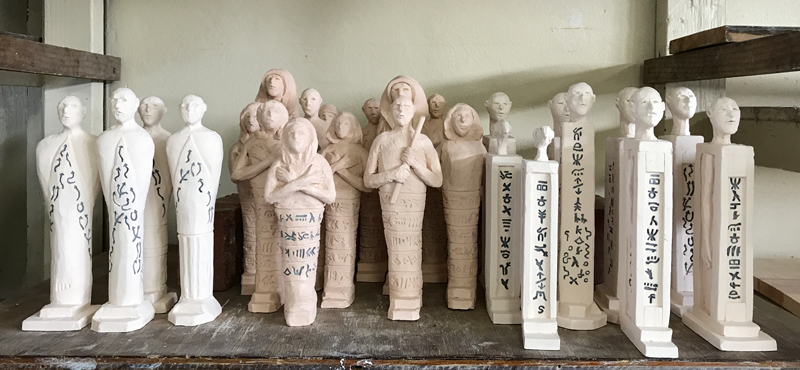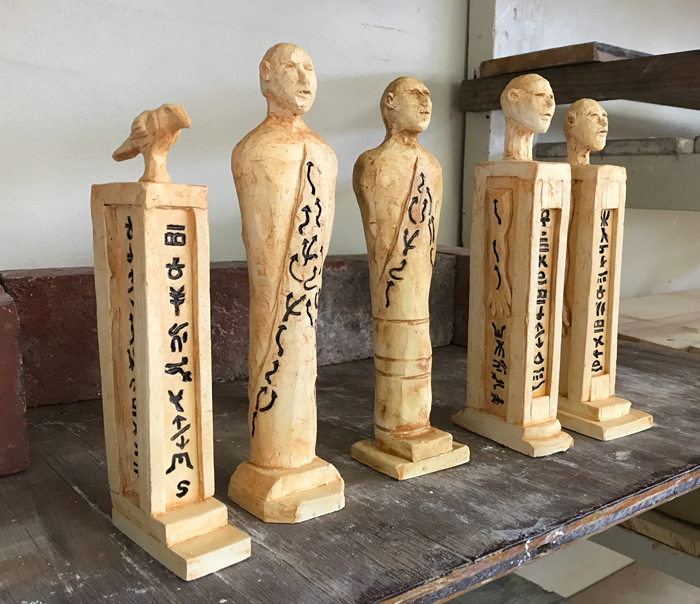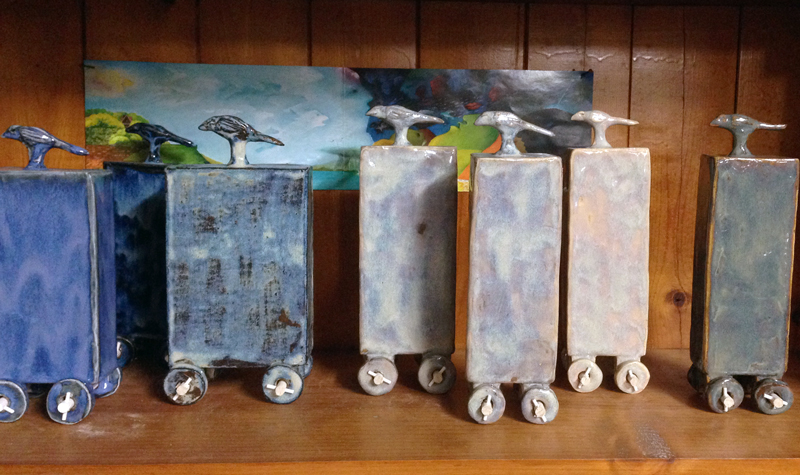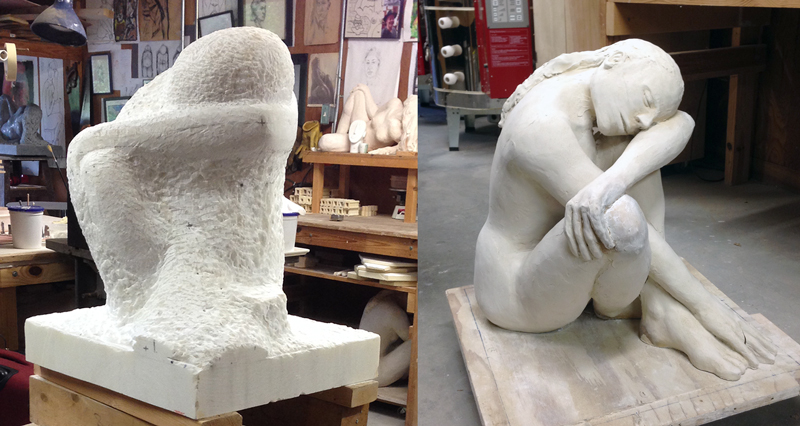I’ve been back at home in Gainesville for a while now. When I returned, I tried to replicate the glaze effects that I achieved in Mendocino last year. To make a long story short, I could not do it. Perhaps, in Gainesville, the composition of the rutile was different or the mineral content of the water was to blame. There were too many factors to sort out. However, in the last month I have had some success with new glaze recipes. Now, I am back to making new carts and I feel the new ones are improvements in design compared to the earlier ones.
For this cart. I used a 5 x 20% base glaze (kaolin, silica, wollastonite, frit 3134 and potash feldspar), plus 1% cobalt oxide and 4% each of rutile and tin oxide. There is a black underglaze, Mayo UG 50, diluted to gray with water and painted over the entire cart; after that, one coat of the glaze is painted on vertically. The firing is oxidation, at cone 6, and the clay is porcelain.
